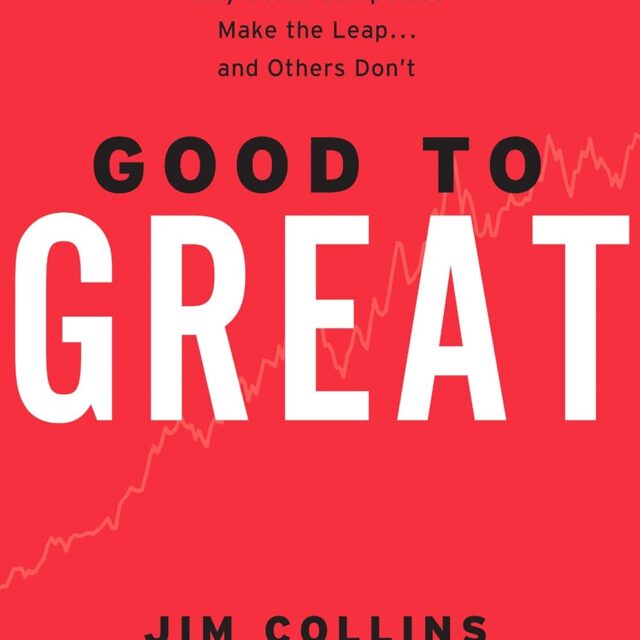In the iconic management study, Good to Great, Jim Collins explores how companies can sustain exceptional performance over time. The book shows how great companies triumph and how long-term success can be ingrained in the very DNA of an organization from the outset. But what happens when a company is not born with great DNA? How can good companies, mediocre companies, and even bad companies achieve lasting greatness? This question has been at the core of Jim Collins’ research for years.
The Study: From Good to Great
Jim Collins and his research team delved deep into the question: Are there companies that defy mediocrity and convert long-term stagnation into long-term superiority? If so, what are the universal traits that allow a company to make the leap from good to great? Over five years, they analyzed the histories of twenty-eight companies to identify the defining characteristics of those that achieved enduring greatness.
The Standards: The Benchmark for Greatness
Using rigorous standards, Collins’ team identified a group of elite companies that made the leap from good to great and sustained those results for over fifteen years. The impact was astounding: after making the leap, these companies generated stock returns that outperformed the general stock market by an average of seven times over fifteen years, surpassing even the best companies in the world, such as Coca-Cola, Intel, General Electric, and Merck.
The Comparisons: What Makes Some Companies Great?
The research team also compared the great companies with a select group of companies that failed to make the leap. What was the difference? Why did one set of companies become truly great performers while others remained good? Through extensive analysis, Collins and his team discovered the critical factors that set these great companies apart.
The Findings: Key Determinants of Success
The findings of the Good to Great study will surprise many readers and provide invaluable insights for companies aiming to achieve lasting success. Some of the key concepts include:
- Level 5 Leaders: The research team was astounded by the type of leadership required to achieve greatness.
- The Hedgehog Concept: A focus on simplicity within the three circles, which is essential to transcending the curse of competence.
- A Culture of Discipline: The combination of a disciplined culture with an entrepreneurial spirit leads to extraordinary results.
- Technology Accelerators: Good-to-great companies think differently about the role of technology in driving success.
- The Flywheel and the Doom Loop: Radical change programs and abrupt restructuring almost always lead to failure in achieving greatness.
Jim Collins’ Vision: Challenging Conventional Business Culture
As Jim Collins notes, “Some of the key concepts discerned in the study fly in the face of our modern business culture and will, quite frankly, upset some people.” Yet, in a world where lasting success is rare, these findings offer invaluable insights for companies seeking to make the leap from good to great.
Additional Questions You Might Have
What is the book Good to Great by Jim Collins about? The book explores how companies can achieve enduring greatness and provides a framework for success that has been proven in numerous real-world case studies.
What was Jim Collins’ best quote about Good to Great? One of the most memorable quotes from the book is: “Good is the enemy of great.” This quote captures the essence of the book—how striving for greatness requires going beyond competence and challenging the status quo.
In what order should I read Jim Collins books? While reading Jim Collins’ books in order is not strictly necessary, many readers choose to start with Good to Great to gain insights into long-term business success before exploring other works like Built to Last and How the Mighty Fall.
What companies are mentioned in Good to Great book? The book references numerous companies, including well-known giants like Coca-Cola, Intel, General Electric, and Merck, to highlight examples of organizations that have achieved sustained greatness.












